putterings 558 < 558a > 558b index
Anne Austin (1895?-1975), journalist, newspaper/magazine editor, writer of fiction (including “problem” novels, romance, crime, mystery)
This page lists some findings about this writer, today known (if at all) for her crime fiction and as the mother of a child prodigy. Her own life as a single mother; a professional writer and editor seemingly always on the move to new settings; and what appears to be a feminist and progressive attitude, interest me now.
She brings to mind Hettie Fithian Cattell (1887-1976), another peripatetic writer/editor and mother; treated at asfaltics 2573b.
Contents are organized as listed/linked below. These categories and their items are subject to revision and addition; some out-of-category items occur where the timeline allows.
- life (links, incidental findings, ongoing notes toward a fuller timeline)
- Waco, writing in the Waco Morning News; also, Baylor (1917)
- Hollywood Confessions, managing editor 1923-24
- Screenland, writings in 1923-25
- novels, noting their dedicatees
- other (editorial)
- Elizabeth Benson (daughter)
- Frank Spector (Elizabeth’s husband, Communist labor organizer)
—
▌ bar at left returns to top of page.
on back : AUSTIN, Anne, author; b. Waco, Tex., September 13, 1895; d. William Henry and Lula Alford (Ratliff) Reamy; student Baylor (Texas) Academy 1910-11, Baylor University, 1912-14; m. Charles A. Benson, of Waco, Tex., Aug. 14, 1912 (divorced); 1 daughter, Ellen Elizabeth (Mrs. Harold S. Leach); m. 2d, Stewart Edmund Book, of Los Angeles, California, October 22, 1922 (divorced). Stenographer, 1909; highsch. teacher, Marfa, Tex., 1914-15, Moody, Tex., 1916-17; feature and fiction writer and dramatic critic, Waco Morning News, 1917, Kansas City Post, 1918-19; editor People’s Popular Monthly, Des Moines, Ia., 1919; newspaper writer, Beaumont and Austin, Tex., 1919-22; mng. editor Screenland and Real Life, 1922-24; fiction writer N.E.A. Service, New York, 1926-30. Mem. Authors’ League America, Screen Writers’ Guild. Democrat. Episcopalian. Clubs: Hollywood Bridge, Calif. Bridge (Los Angeles). Author: Jackson Street, 1927; The Black Pigeon, 1929; Daughters of Midas, 1929; The Penny Princess, 1929; Rival Wives, 1929; Girl Alone, 1929; The Avenging Parrot, 1930; Murder Backstairs, 1930; Murder at Bridge, 1931; One Drop of Blood, 1932; A Wicked Woman, 1933 (pub. in 8 foreign langs.). Writer of adaptations and original screen stories, 1933. Home: 8439 Fountain Av., Hollywood, Calif.
on back : It was reviewed in The New York Times (November 20, 1927) : link (paywall) Waco
one of a series, with Anne Austin by-line. more to add (20251018)
An interesting close to a series, that invites readers to do better. On the same page : The peasant’s wife who looked at her big brute of a husband and said, “Our children cry. They must have bread,” did as much to start the revolution in Russia as did her militant husband. in Sheaf of Baylor Verse, Compiled by Flora Eleanor Wells, in The Baylor Bulletin No. 4 (Waco, Texas; July 1, 1919) : link
Screenland
Hollywood, tittilating stories, with moralistic and critical aspects; beauty, sex, skin, romance, articles and advertisements on self-improvement... a dreamworld of desire, longing for another life captions (some other names in text) —
Irene Castle is being kept out of pictures by a broken collar-bone. Irene turned the misfortune of short hair, necessitated by an attack of fever, into a fashion.
Almost everyone knows that Elliott Dexter was out of pictures for two years, because of paralysis. He refused to be downed, however, and hobbled back to work, where he has a penchant for loving Gloria Swanson — on the screen — in vain.
Just when Mabel Normand was getting nice and fat after a successful tilt with incipient tuberculosis, the death of her best friend, William Desmond Taylor, sent her back along the road to death again, through grief and shock. But she is “coming back.”
Harold Lloyd is one actor who they claim does not use stunt artists, and in his new film “Safety Last,” he takes the chances himself.
Speaking of minor handicaps, Gloria Swanson had to overcome two difficulties before she attained her place in the sun.
Little Lois Lee, whom you saw as Countess Helga in The Prisoner of Zenda, had to lie flat on her face for many weeks, just after she had made her first real success in pictures.
Lila Lee is a real heroine. Poor Lila is naturally plump, and has to diet unremittingly to retain that slender grace.
—
odd. in this same issue (p84) is promised a piece by Anne Austin to appear in the April number. —
“What Makes A Screen Villain ? but the article is attributed, on the April number’s table of contents (link), to “W. Ellen Reamy” — who would be Mrs. Willie Reamy Benson), listed in ex-students’ directory of Baylor University : link
Reamy was Austin’s father’s surname; Benson the surname of her first husband.
Ann Austin is now on masthead (with Eunice Marshall), as Associate Editor
Betty Compson (1897-1974), vaudevillean, violinist, film actress and producer George Loane Tucker (1872-1921), actor, silent film director, screenwriter, producer, and editor. —
Anne Austin is sole Associate Editor in September 1923 masthead : link You blew the trumpet. I blew the trumpet. We all blew the trumpet. Our united breaths breathed a prayer for better acting, for sincerer stuff, for mellowed ability, for richer maturity —
Same (September) issue contains Betty Morris, “Hollywood’s Yellow Peril; The Oriental problem in filmdom” Anne Austin not on masthead, 8:5 (January 1924) : link One of two pieces by Austin, in a special section in this issue, “Could You Qualify As An Extra?”; the other is —
same publisher as Screenland; Anne Austin is managing editor in 1923 and, according to the Fiction Mags Index [link], in July 1924. “1927 Sees Decrease in Number of Syndicates; interesting analysis of the state of syndicates, from which — Anne Austin in Hospital The following instances are speculative; they certainly need more work. Anne Austin had some health issues (spine), and so might eventually have taken on more passive editorial roles. Also, it seems likely to me that she was politically liberal — perhaps not to the degree as her Communist-organizer daughter — and that she may well have gravitated to publications with a leftist (albeit Christian) bent. novels — “newspaper fiction”
dedicated to Madeleine Skinner Ruthven (1893-1978), screenwriter (and later poet), blacklisted as a Communist in the 1950s. Ruthven seems to have lived in/around the Santa Monica Mountains; see the (wonderful) profile by Suzanne Guldimann,
“Madeleine Ruthven : Poet of the Mountains” at The Malibu Post (July 3, 2016) : link
For Mary Hodges Terhune / With love and admiration
from publisher’s description (in back pages of Girl Alone (1930)) —
—
On Terhune, I can (so far) find only this entry in Catalog of Copyright Entries, Dramatic Compositions — front jacket flap — will list sections as found, for instance in The (Fort Worth) Press 6:79 (Monday, January 3, 1927) : link
A possibly different version is The New Saint and Sinner, that began — in medias res — appearing in The Rocky Mountain News with issue 69:311 (Tuesday, November 6, 1928) : link —
promotion of the serialization, link
For Ruth Hovey “Popular author turns her talent to mystery story for News-Times,” South Bend News-Times (January 22, 1929) —
reviewed in America (“A Catholic Review of the Week”) 41:11 (June 22, 1929) : 263 : link —
“The Black Pigeon” (Greenberg. $2.00) by Anne Austin is a challenge to confirmed mystery hounds. Almost every character in the story is under suspicion for the death of “Handsome Harry” Borden; except, perhaps, his secretary, Ruth Lester, who used to feed the pigeons every morning from the sill of the office window which looked across the narrow airshaft into the office of Jack Hayward, Ruth’s fiance. Of course Hayward had reasons for disliking Borden and had innocently woven a net of circumstances which might prove difficult to explain. But Ruth was the only one who knew and she would never tell. The dead man’s widow was not without motive for the deed and she was, perhaps, the last one to visit the office on that fateful Saturday afternoon. Detective Sergeant McMann, of the New York police force, well merits the $5,000 reward for bringing the murderer to justice.
—
Carolyn Wells mentions the book in her The Technique of the Mystery Story (New and Revised Edition, Home Correspondence School, 1929) : 63 : link —
“The Black Pigeon” by Anne Austin is a fine piece of work. There isn’t an automobile chase in it, not a single person bound or gagged or thrown into a gas chamber; no one is kidnapped or shanghaied. But it has a most persistently compelling interest and there is no false note struck anywhere. It is bright, fresh, modern. The slang is brisk and telling. The suspense, subtly managed, rises cumulatively to the dramatic climax. front jacket flap — For Ruth Lyons
Perhaps Ruth Lyons (1905-88), radio and television host/broadcaster ? from description in Economy Book League (Cleveland, Ohio reprint of 1934, description in an eBay offering) — For my mother and [] (from an eBay photo, not capturing full page)
from front jacket flap — Was widely serialized, including in The Hongkong Telegraph. Here is the advertisement for the forthcoming feature, in the issue of March 30, 1928 : link — Here is a synopsis leading Chapter 6, from issue of April 10, 1928 : link — For Arline and F. Hugh Herbert
For R. H. W. and Agnes Fahy, R.N.
“The invaluable advice and criticism of the staff of Compton Sanitarium, Compton, California, during the writing of this novel, is gratefully acknowledged by the author.”
Compton Sanitarium seems to have been what today would be called a “rehab” facility : “private; nervous and mental; narcotic and alcoholic” as described in the AMA Hospitals, Sanatoriums, State and Charitable Institutions of the United States and Canada (May 1922) : link
aside — For my daughter / Elizabeth
front jacket flap — made into a film in 1934 : wikipedia : link
For Marie Hoppe Seborg
other, editorial
aside — Bulletin is still pursuing its plan of educating its try-out reporters. At the second of a series of meetings, which was held on Friday, in Bulletin Office, Miss Anne Austin, a well known writer and newspaper woman, and Eugenie Fribourg, last year’s editor of Bulletin, who is now writing for the Brooklyn Daily Eagle were the guests of honor. Elizabeth Benson (1913-94)
see Greg Daugherty, “The Child Prodigies Who Became 20th-Century Celebrities,” Smithsonian Magazine (June 24, 2013) : link
An Elizabeth B. Spector, atty, is listed in the Los Angeles telephone directory (June 1974), at 3325 Wilshire (380-1900). A cursory search suggests this Elizabeth B. Spector specialized in labor issues (typically on the union or worker side).
reviewed in The New York Times (November 20, 1927) : link (paywalled) on back : on back : Elizabeth’s second (or even fourth?) husband was Frank E. Spector (1895-1982), a Communist Party leader, and labor organizer in California agriculture.
23 October 2025![]()
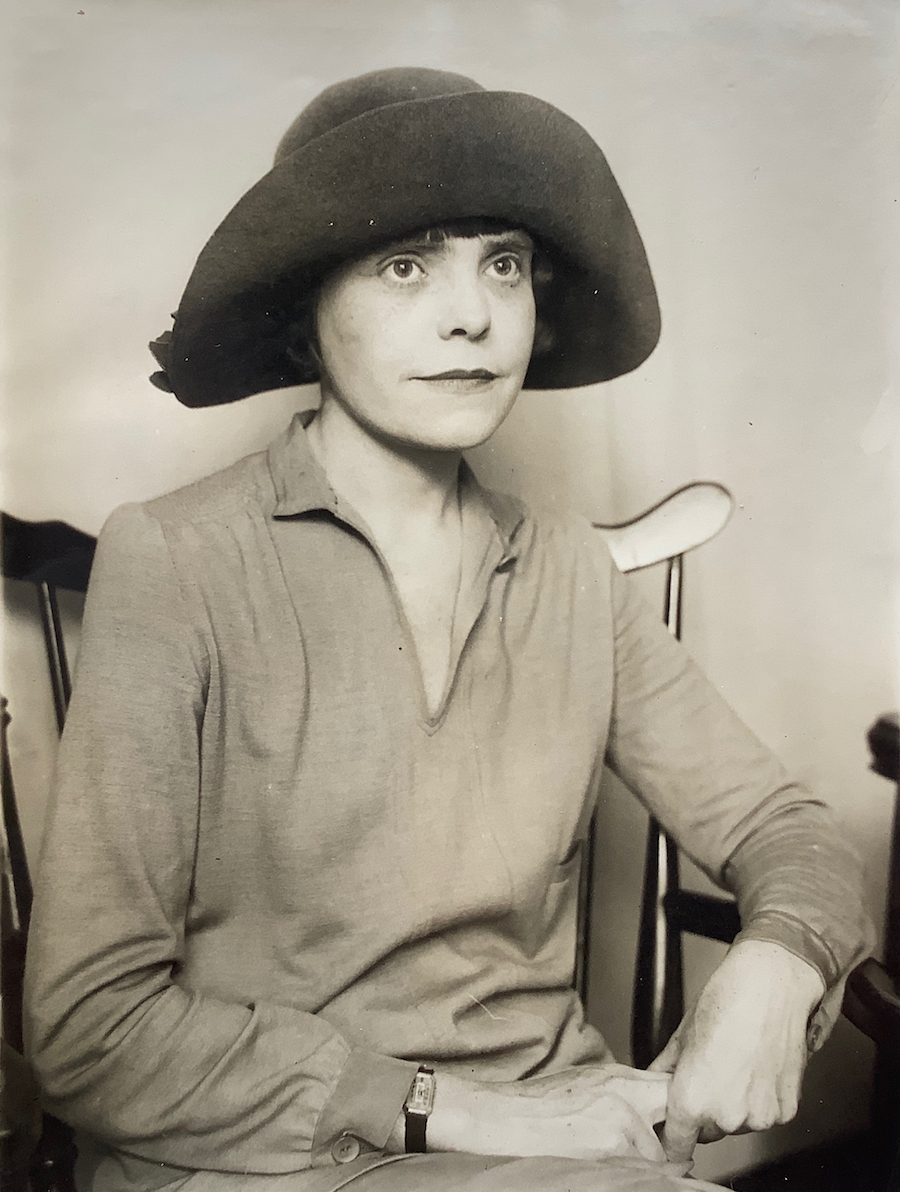
penciled “Anne Austin” and (in red) A6632;
rubber stamped “REFERENCE DEPT. / NOV 10 1926 / N. E. A.”
borrowable at archive.org : link
gives birth year as 1893
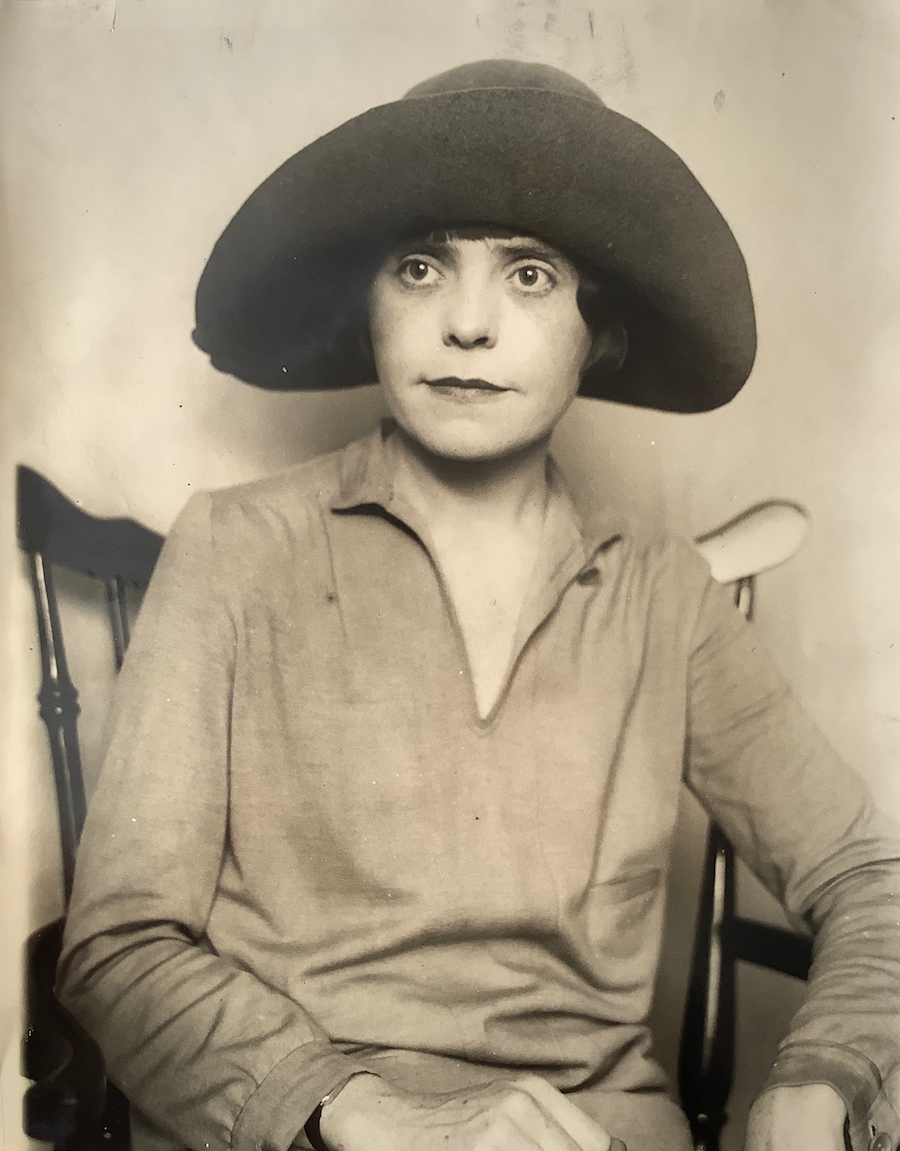
penciled “Anne Austin” and (in red) A6632;
rubber stamped “REFERENCE DEPT. / NOV 10 1926 / N. E. A.”
thus, same identifying information, but shot/angle different from above.
from which this passage —
“Jackson Street” carries Mary Carey along from the slums of a small Texas city to college, early and unwise marriage, motherhood, freedom again and success as a newspaper woman, with promise of poetic achievement. Then love once more. But Mary Carey, dreading marriage, will only agree to live with her lover. She refuses to marry him, fearing a repetition of her earlier unhappiness. There comes the day when her lover bids her farewell, assuring her that a man desires to be bound, to settle down into the prosaic humdrum of being a husband that he may get his mind on other things than being a lover...
![]()
The Waco Morning News 6:153 (March 18, 1917)
via archive.org : link
The Waco Morning News 6:159 (March 25, 1917)
via archive.org : link
“Anne Austin Will Fly With Theodore Today.”
Anne Austin of the editorial staff of the News will accompany Captain Theodore on an airplane flight from the aviation grounds this afternoon.
Rabbi Warsaw also has expressed a desire to make a flight with the captain, if he can possibly find the time.
The Waco Morning News 6:249 (June 27, 1917)
via archive.org : link
When the woman feels the grasp of tiny fingers on her inadequate breast, the tugging at her skirts of other small hands seeking food from the one who has always given it, something that has lain latent in her mind awakes. She becomes a fighting thing, unafraid of bayonets. She goes forth to win bread.
On Monday a crowd of hunger-driven women in Amsterdam stormed a dozen barges laden with potatoes for the English, seizing a tone of potatoes.
In Germany sporadic outbreaks of women seeking food occur in all the industrial centers. If Germany, too, is driven into revolution it will be due to the desperate courage of women, fighting for their young and urging their men forward.
In our United States the women of East Side New York have twice stormed the city hall, gripped by the terrors of food costs, demanding that they be fed by the government.
Unreasoning, ineffectual as it may be, all this shows that women are essentially of the same stuff as men. Given the motive, they are as physically courageous as men and there is no stronger motive for a frenzy of bravery than the hunger of little children.
Mother’s Day ! How much I ought to show
Fidelity, Faith, Love, Gratitude;
One day is far to brief, I know,
To recognize that high beatitude.
All these — and more — I bring, oh, mother mine,
My sacred duty, and thy right divine.
— Willie Reamy Benson
![]()
wikipedia : link
[very nice line-art] “Decorations by Mahlon Blaine”
Screenland 6:5 (February 1923) : 46-48, 74
archive.org : link
“‘Are we down-hearted? No!’ say movie stars who have successfully overcome tremendous physical handicaps.”
Screenland 6:6 (March 1923) : 48-51
archive.org : link
Even the baby knows the answer. His little mustache, of course. And equally obvious is the fact that the broad smile denotes the hero. Villains never smile: they may smirk, or sneer, or leer, but they never smile. Smiles are the peculiar property of the hero, the heroine, the ingenue, and the screen mother. God love ’er, says Anne Austin, who catalogues neatly the stock smiles of our choicest screen stars. You will want to read By their Smiles Ye Shall Know Them, in Screenland for April.”
on Mary Pickford, Douglas Fairbanks, Charles Chaplin and Charles Ray
Screenland 7:1 (April 1923) : 28-30, 101
archive.org : link
on Mary Pickford, Douglas Fairbanks, Charles Chaplin and Charles Ray
Screenland 7:1 (April 1923) : 50-53, 98
archive.org : link
a photograph on page opposite start of article : a run-down rooming house, men loitering on porch, captioned :
“Heartbreak House / The Service Bureau, where thousands of extra people hope against hope that work may be given them, enough to keep the life in their tired bodies.”
Screenland 7:2 (May 1923) : 23-25, 87
archive.org : link
Screenland 7:3 (June 1923) : 57-59, 100
archive.org : link
Screenland 7:4 (July 1923) : 20-22, 85
archive.org : link
caption : “George Loane Tucker’s discoveries in religion revealed to Betty Compson through the ouija board, are interesting and startling.”
Screenland 7:5 (August 1923) : 22-23, 93, 101, 104
archive.org : link
“Compson’s star began to rise with the release of the 1919 feature The Miracle Man (1919) for George Loane Tucker.”
wikipedia : link
wikipedia : link
The magazine is introducing more special sections, each containing numerous small items, illustrations; I imagine that Austin might have been involved in these, so that her bylined pieces fall off.
Screenland 7:6 (September 1923) : 40-42, 90
archive.org : link
Flapperism Is Passé
The whole world — or all that part of it which goes to pictures — is sick of flapperism. Too long have our movies been the pap which our directors and producers and exhibitors — a vicious circle, without beginning or end — have thought would appear to the public...
long title : “Oriental Actors are talented, but East is East and West is West, and never the Twain shall meet — as long as the jealous West has anything to say about it”
46-47, 97 : link
“Sorrow is the most salable commodity in the world of fillum and hokum. For sorrow is the woof and warp of hokum...”
Screenland 8:1 (October 1923) : 67, 94 [latter page missing in scan]
archive.org : link
in this number —
“Screenland Fights for Freedom; The antiquated portion of the motion picture business considers Screenland too fearless — and makes strenuous efforts to muzzle it; The attempt to censor Screenland puts the motion picture world’s fight against censorship in a strange and curious light.” 30-31, 94 : link
illustration captions —
The pictueresque little “Come-On-Inn” Restaurant which located near the studios caters to the brightest stars and cutest extra girls.
The real extra girl waits on table or serves in the shops between jobs, waiting patiently for her chance, for in the movies, one successful “bit” insures a good living and a chance for a great future.
Screenland 10:1 (October 1924) : 28, 67
archive.org : link
“Have you often wondered about the Extra Girl and her picturesque life? Well, here is her story as she told it. Miss Austin, as a good reporter should, has let us hear her direct”
caption —
Hundreds of extra girls won their $7.50 at the elaborate wedding ceremony in “Sacrifice“ wherein Normal Talmadge and Eugene O’Brien make another joyous movie wedding.
Screenland 10:1 (October 1924) : 31-36, 67 [Anna May Wong], 95
archive.org : link
“Charles de Roche brings to the Screen the virility of a soldier.”
Screenland 10:4 (February 1925) : 26-27, 86, 88
archive.org : link
![]() Hollywood Confessions
Hollywood Confessions
scans of issues of June and August 1923 viewable at archive.org :
June 1923 : link
August 1923 : link
![]()
source : The Authors’ League Bulletin, June 1924) : link
Exclusive annual tabulation shows drop from 100 to 80 — Newspaper mergers hard blow to many firms — More than 2,000 features offered to editors.” By Philip Schuyler.
In the serial listings, some editors see the sexy stories giving way to more healthy tales of adventure and romance. This view, however, is not held in the Hearst offices, where the fiction board, made up of Ray Long, Morrill Goddard, M. Koenigsberg, Philip A. Paybe, and Percy Shaw, are inclined rather to rotate, sending out one serial of sex interest and following it with adventure, then romance, before returning again to sex.
The fiction board is one of the most interesting developments of the present day syndicate field. William Randolph Hearst’s idea in establishing it was for the purpose of discovering exclusive writers of newspaper fiction. It followed the success of Fremont Older, who, as editor of the San Francisco Call, gave Eleanore Meherin free rein to writer her first fiction serial “Chickie,” which, as originally produced had San Francisco as its locale, and, which changed its locale as it was sold to newspapers in various cities throughout the country and even in China.
From this beginning such writers on other syndicates as Winifred Van Duzer, Robert Terry Shannon, Beatrice Burton, Virginia Swain and Anne Austin were given their first opportunities to write newspaper fiction, which could be adapted to any American city where it was sold. It has been an expensive undertaking for the syndicates with high priced promotion adding to the bill.
The Birmingham [Alabama] Post (February 2, 1928) : 11 : link
(newspapers.com promotional snippet)
Anne Austin, one of the best known newspaper serial writers in the country and author of the much new novel, “Jackson Street,” is in a New York hospital recovering from a serious spinal operation.
...Miss the last year and In addition, to “Jackson Street” a half has written “Saint and Sinner,” “Daughters of Midas,” “The Penny Princess,” and the unpublished “[Girl] Alone.” The latter she insisted on completing before going to the hospital, despite the knowledge that the operation was “Girl Alone” will be released by NEA Service, with whom Miss Austin is under contract, in March. Her next work will be a sequel to her immensely popular “Saint and Sinner” is now appearing in the Pos[t]...
[corrupted OCR scan text]
![]()
I may be completely mistaken; but noting clues as I find them.
“published monthly, except July and August, by the Council for Social Action of the Congregational Christian Churches and by the Commission on Christian Social Action of the Evangelical and Reformed Church”
Underwood is associated with the Danforth Study of Campus Ministries, entitled >The Church, the University, and Social Policy, which was published by Wesleyan University Press in 1969. The Danforth Study of Campus Ministries, sponsored by the Danforth Foundation beginning in 1963, was directed by Kenneth Underwood. Through questionnaires, studies, and analysis, the project documented the state of religious awareness and commitment on American university and college campuses.
this from the Danforth Study of Campus Ministries records, Yale Divinity School, RG 62 : link
Underwood died in 1968
“This article is based on a radio script prepared for ‘Religion at the News Desk,’ a weekly commentary over station WELI in New Haven, Connecticut. Each script is the product of group journalism. Credit for this story goes to Robert Lynn and Carl Siebel, researchers, William Miller, writer, and Anne Austin, editor for publication.”
Motive (“the magazine of the Methodist Student Movement”) 12:8 (May 1952) : 10-12 (10) : link
![]()
wikipedia : link
Nan Carroll was Attorney John Morgan’s capable private secretary . . . “Almost a junior partner in the firm,” insisted Willis Todd, Nan’s only boy friend. It was Willis, too, who made Nan realize that she was in love with Morgan, Morgan who idolized his beautiful selfish wife, Iris. Shocked at finding herself in love with a married man, Nan decided to resign her position.
Circumstances made this impossible, however, and before she could carry out her resolve, a swift series of thrilling happenings threatened to change the course of six lives.
Here are characters you will recognize as real, faced with problems of absorbing interest. Romance and marriage, mother love and heartlessness, woven together to produce a story genuinely thrilling.
Anne Austin has succeeded in writing another story of compelling interest. When you learn the problems that face the figures in this book, you will want to read the solution.
Verbena Rose and Samantha Sunflower ; a comedy drama in serial form, by M. H. Terhune. Installment no. 1. © 1 c. Feb. 3, 1930; D unpub. 4143 : Mary Hodges Terhune,
1741 Colquitt St., Houston, Tex.
1210
wikimedia : link (pdf, search within)
google books : link
via hathitrust : link
Just when he was ready to retire, after thirty years of hard work accumulating a fortune and building a tremendous business, old T. Q. Curtis finds himself disinherited by his son. All his hopes of having Clay succeed him in business are shattered when the youth announces that music is his career.
To fill the void left in his life by his only child, this merchant prince plans a series of elimination contests only to find that achieving success in dealing with beautiful women is far different than selling merchandise.
In the quest of a daughter, he involves himself in a series of situations only possible in this day of sophistication, gold diggers and old young people.
The story is a romance touching humaness, full of pathos and humor, with the old man futilely trying to use his gold to buy happiness.
The story makes an intensely interesting struggle between three beautiful women after fortune and ends as all stories should end, happily.
(serialized only, have not located the 1937 published book listed at wikipedia)
and was still running, six days a week (excluding Sunday!) on January 28, 1929.
It is possible that “The New” was added for legal reasons, perhaps because it was transferred from The Denver Morning Post to the paper which absorbed it, The Rocky Mountain News, on November 5, 1928.
It is also possible that it is a revised story; am working on this (20251023).
Ranger (Texas) Times (Monday evening, September 20, 1926) : 4
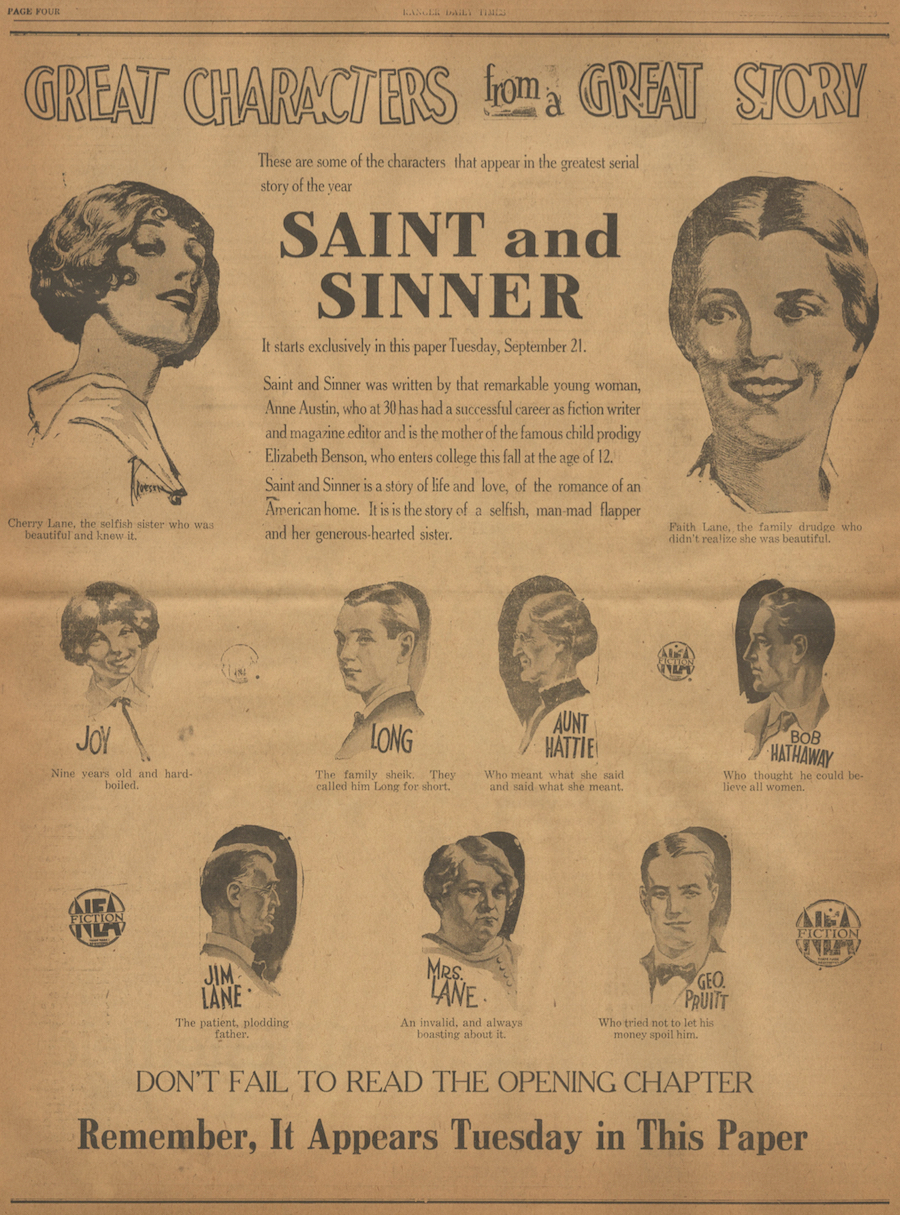
hathitrust : link
chorus girl, actress ? other?
LoC’s Chronicling America : link
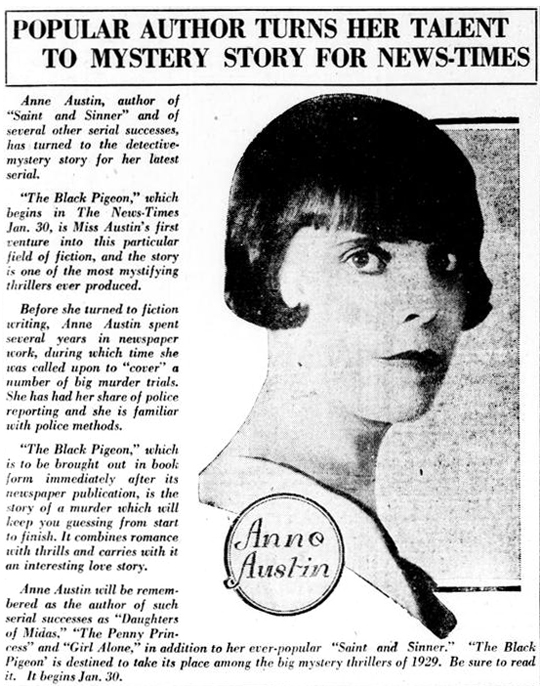
The author of this book says:
“A black pigeon, which actually left footprints of blood on my own office window in the Marbridge Building in New [63] York City, gave me the idea for the story, but I let it simmer in my subconscious for three or four months before attempting to make a detective novel out of it. The actual writing was begun October 17th and finished at midnight, December 16th — exactly two months. I may add that I never had a sound night’s sleep the entire two months. But if any reader has a tenth of the fun and thrill reading it as I had in writing it, I’ll not grudge the lost sleep.”
google books : link
via hathitrust : link
Are secretaries people? Vera Victoria Cameron, otherwise known as Vee Vee, thought they were something apart from the rest of the world and was sadly disillusioned when she was passed by for promotion because her boss was afraid of her.
A snappy young advertising man saw the real person behind Vee Vee’s horn-rimmed spectacles and prim mannerisms and developed a plan for promoting the products of the Peach Cosmetics Company, with Vee Vee as the principal figure, that started plenty of action.
His ingenuity and imagination enable him to conver a rather drab girl almost overnight into a charming woman of poise and beauty and not unlike Frankenstein he was ensnared by his own creation. The result if a story that rivals Cinderella in its denouement.
With the heart theme never submerged, this modern tale makes you wonder if the modern Cinderella isn’t a far more interesting character than her legendary sister.
wikipedia : link
Police Commissioner O’Brien laughed at old Mrs. Hogarth when she wrote from her room in the Rhodes House begging him to take steps to prevent her murder, but “Bonnie” Dundee, newest recruit to the homicide squad, did not laugh. Somehow he was convinced that the room-bound old lady and her miser’s hoard were in actual danger. Mrs. Hogarth’s prophecy is fulfilled. The only eye witness to the cold-blooded crime was her parrot. How Dundee used the avenging bird to solve this astounding mystery makes one of the finest detective stories written by this famous author.
“Murder Backstairs” is the ingenious unfolding of a baffling mystery by a past mistress in the art of pointing the finger of suspicion at the various characters, planting impressive false clues, and leading the reader over wrong but delightfully inviting trails. Yet each incident is plausible and logical and the plot is sustained with ever-increasing suspense up to the discovery of the criminal. Dundee and Strawn, amateur and professional detectives, the cultured Mr. Berkeley and his vulgar wife and mischievous younger daughter Gigi, Clorinda their older daughter, Dick their difficult son, and Mrs. Van Renssalaer Lambert, the impoverished New York aristocrat who is social secretary to Mrs. Berkeley, are more than characters; they live. How a week-end party turned into a murderous tragedy in which hosts, guests, and servants were all involved is the story of “Murder Backstairs.” It will add to the fine reputation which Miss Austin has already gained by her previous books, among which is “The Black Pigeon.”
“Girl Alone” is a new American story which will appear in the “Telegraph” as a serial beginning on Tuesday April 3rd.
It is the story of a girl who leaves an orphanage to work on a farm and then is forced by circumstances to run away with the youth who has befriended her. They come upon a travelling carnival. The next day Sally is a member of the carnival troupe, playing the strange role of Oriental crystal gazer. It is an effective way of hiding from the police, who are looking for two fugitives.
From that point on things keep on happening. It is a story high in love interest, and Anne Austin has caught the true spirit of carnival life. There are strange characters in “Girl Alone,” but they are real characters.
Sally Ford, 16, who has known no other home than the orphan asylum, since she was four, is “farmed out” for the summer to Clem Carson, a farmer. Before she leaves the Home, she begs Miss Pond, sentimental office worker, to tell her something about her mother. The orphan is crushed to learn that her mother after leaving her at the orphanage never returned to see if she lived or died. Her hopes that there is someone somewhere to love her are gone.
On the drive to the farm, Sally listens to Clem’s boasts about his fine farm. They are met with the harsh voice of Mrs. Carson, who calls to Sally to come in at one and get to work. As she leaves the car, arms stacked with bundles, she sees a handsome young man whom she hears called David. In the house she is met by Pearl, the gaudily dressed, over-developed daughter, who warns her, “Hands off David — he’s mine.” At the supper table that night Sally experiences a new emotion when Pearl suggests to David that they go to a picture show.
Project Gutenberg (text file) : link
hathitrust : link
Shock therapy was employed there; it appears to have been an important institution in its time.
recall mention of a “stay in a New York hospital recovering from a serious spinal operation,” in The Birmingham [Alabama] Post (February 2, 1928), cited elsewhere on this page.
Is a woman wicked just because she commits a crime? Even as serious a crime as murder?
Naomi Trice is sure of it, and so considers herself. In a moment of passionate hate she has done something that she is sure she will never be able to forget. But, facing tremendous odds — ignorance, poverty, the horror of remorse — she refuses to give in. Fighting gallantly through ten significant years until she makes a new life for herself — until the old tragedy faces her again.
In A Wicked Woman Miss Austin has done something quite different from the mysteries which have brought her wide recognition. But she has done it equally as well and, in this story of a woman who makes a bargain with life, has written an absorbing, unusual novel.
via hathitrust : link
![]()
digital collections, barnard.edu : link
Elizabeth Benson ’30, one of two managing editors
Miss Austin spoke on the value of college newspaper training, having been managing editor of her college newspaper, and after graduation a member of the staff of a texas paper. The principles of Journalism which she had learned in college were invaluable to her on a city newspaper.
Miss Austin stated that newspaper training is the best for the
embryo writer. A tense, concise style is cultivated, and the value of the exact word is learned. Miss Austin is now under contract with a syndicate to write serials. A successful mystery story of last year, “The Black Pigeon,” was one of these. Miss Austin has also written a serious problem novel, “Jackson Street.”
“The College newspaper, in appealing to a higher mentality than
does the metropolitan newspaper, can accpmplish a great deal,” said Miss Fribourg, in her talk. “The metropolitan newspaper appeals to the intelligence of a twelve-year old, and is therefore restricted in material and in style. The college newspaper can think ^and write intelligently, because of the higher mentality of its readers.”
The importance of the first paragraph, the impersonality of the
news story, and the brevity of the news paragraph were among the points Miss Fribourg stressed.
![]()
U Virginia copy/scan (via hathitrust) : link
Transcriptions of these are provided at putterings 558b
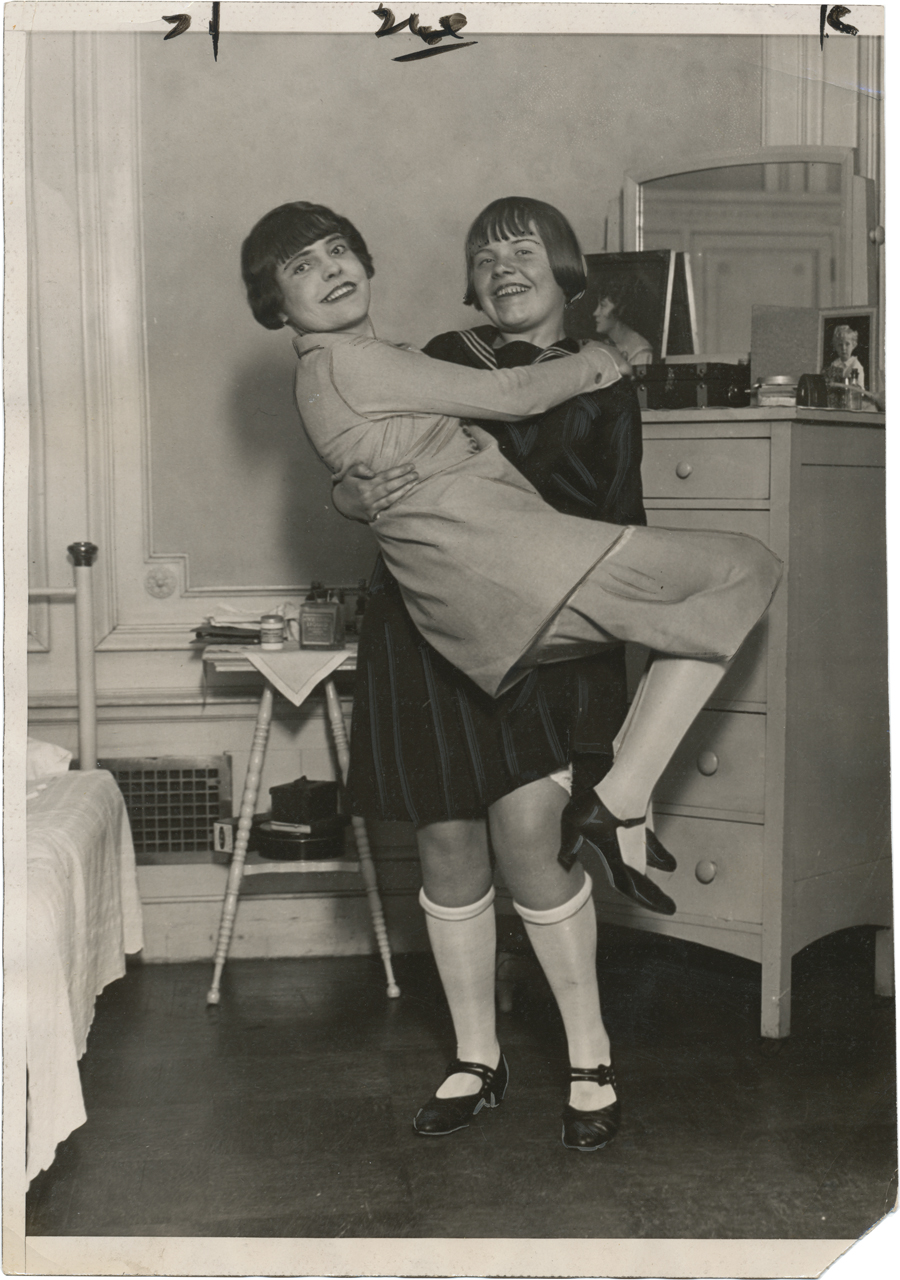
typewritten “Ellen Elizabeth Benson & Mother Anne Austin;”
penciled “child prodigy” under circled daughter’s name; “E. E. Benson & A Austin;” and “A6632;” and
rubber stamped “REFERENCE DEPT. / MAY 28 1926 / N. E. A.”
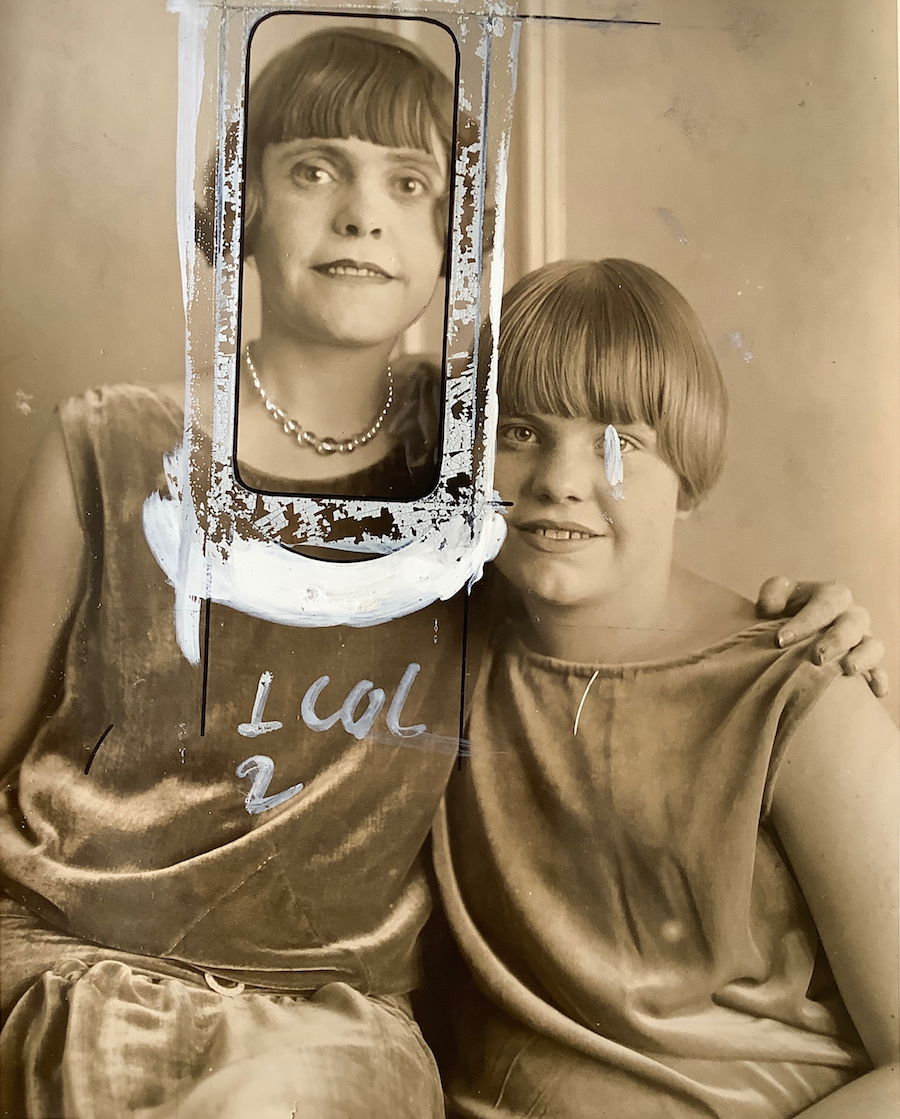
penciled “Anne Austin and daughter Elizabeth” and A6632;
rubber stamped “REF. DEPT. / 6- 9 37 NY. / N. E. A.”
date may be for print, not original photograph? or is erroneous?
![]()
“Imperial Valley Fights” in Labor Defender. Vol. 5 No. 7. July, 1930. link